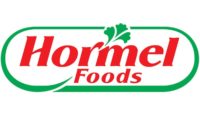The cold storage segment has seen substantial growth since the pandemic, and industry experts expect that to continue, driven by increasing consumer demand and the related need for temperature-controlled storage and shipping of refrigerated and frozen food products.
Retail frozen food sales in the U.S. increased by 37% between 2018 and 2022, according to an American Frozen Food Institute report, and they continue to outpace pre-pandemic levels.
Positioning itself to meet market demand, temperature-controlled supply chain services provider Americold recently entered a strategic collaboration with Canadian Pacific Kansas City to co-locate warehouse facilities on the CPKC rail network. The intent of the effort’s first facility in Kansas City, Mo., is to bring together cold storage and value-added-services with expedited intermodal transportation solutions connecting key U.S. Midwest and Mexico markets.
“Cold storage capacity has effectively supported the industry in the past and is now seeing an influx of additional investment being made in the space,” said Patrick Ballard, Americold’s vice president, protein sales. “Manufacturers need to support higher inventory levels following COVID to safeguard fill rate and customer service demands, especially in case another pandemic or disruptive event occurs. Forecasts for long-term growth in food consumption also support increased cold storage capacity.”
Like stakeholders across the meat and poultry supply chain — and consumers as well — the cold logistics sector is feeling the effects of food price inflation.
“Inflation has impacted the product mix of what is purchased in some households and also the amount of stocking up,” Ballard said. “This change in consumer purchase behavior can ultimately impact the amount of protein product stored in cold storage and/or the amount of protein product that is sold fresh versus frozen. Inflation and the value of the dollar in other countries also impacts the export volume demand across beef, pork and poultry products.”
Rising prices exert a ripple effect across the supply chain, Ballard said, combining with inflation across wages, energy and labor availability/retention, all playing a role at one time or another during the COVID and post-COVID era for efficiently managing the cold storage industry’s needs, he said.
To address those market needs, Americold is aiming to leverage the value-added processing services it offers meat and poultry companies to set itself apart from other cold storage logistics services providers, Ballard said.
“Value-added services allow us to strategically align with our customers and the needs they have across their supply chain,” he said. “Having the right service offering in the right location allows us to help our customers when importing into the U.S. or exporting out of the U.S., while also performing necessary services to support the processing services needed to get finished product to the end consumer.”
For example, Ballard said raw or work-in-process product can require specific temperature zones and or separation away from other protein products or allergens.
“An example would be requirement of Halal certification,” he said. “A logistical consideration is also the future use and impact of electric trucks and the supporting charging station structure in the industry.”

.png?height=96&t=1647275041&width=96)



Report Abusive Comment